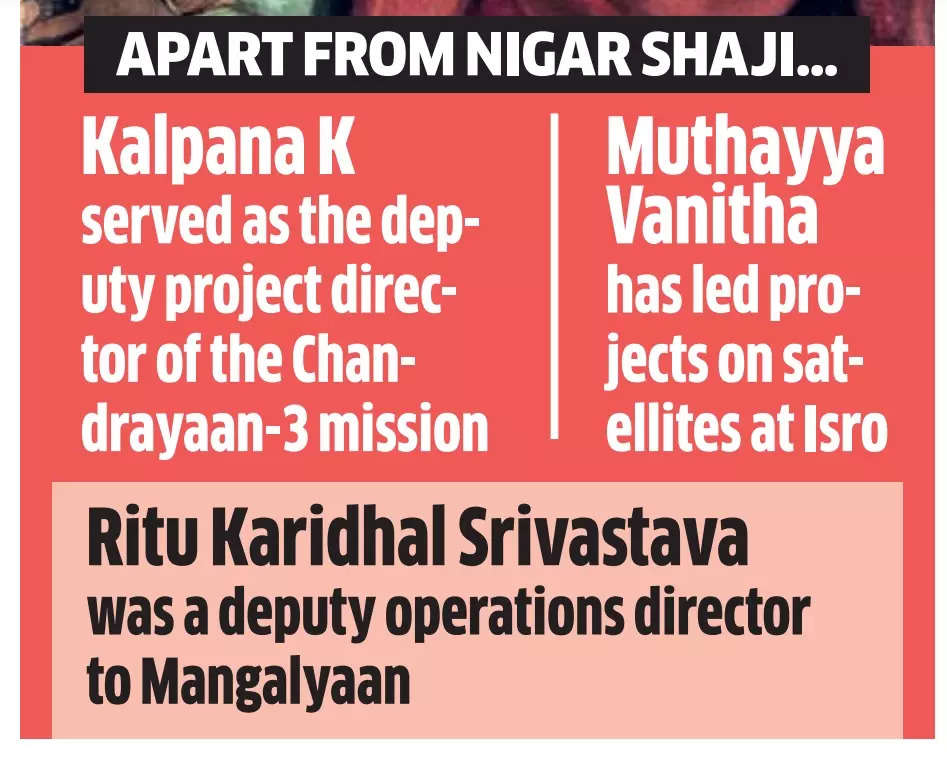Also in this letter:
■ Corporate leaders might undergo communication training
■ Australia’s Pepper Money looks to set up an NBFC biz in India
■ Mithun Sacheti on life after CaratLane
Aditya L1: Several youngsters, illustrious women, and India’s aim for the sun
A couple of students from the Indian Institute of Astrophysics, a student and engineer from the Centre of Excellence in Space Sciences, Kolkata, a scientist from the Udaipur Solar Observatory, and a PhD student from the Inter-University Centre for Astronomy and Astrophysics (IUCAA), figure among the band of youngsters who toiled hard to take India closer to the sun. Not to forget, the women of Isro.
Youth power: Durgesh Tripathi, a professor with IUCAA, said youngsters led the way in developing key payloads for Aditya L1 — India’s first space-based solar observatory. “We have had a lot of youngsters because when we looked at this payload, we wanted to look at the expertise available and we found none. So then we decided that we would hire students and postdocs, train them and build.”

Front seat to history: Janmejoy Sarkar, a 26-year-old PhD student, was involved in the calibration, testing and integration of the payload. Speaking about the viewing gallery experience, he told ET, “It was a huge gathering with literally no space to walk around. The energy of the crowd was splendid even in the summer heat. The crowd counted down and cheered as the rocket started flying. A truly wholesome experience.”

Meet Isro’s Nigar Shaji: If it was the young guns who led the way, Isro’s women were the vital cog in Aditya L1’s launch. Hailing from Tamil Nadu’s Sengottai, 59-year-old Shaji is the project director of the sun mission. Shaji, who is surrounded by science at work and home, is on top of the list of illustrious women who have been a key part of India’s recent space missions.

More girls in science: “Visuals of women project directors taking the stage encourage girls and young women to pursue a career in science,” said Annapurni Subramaniam, director of the Indian Institute of Astrophysics (IIA). “With more women representation, and women scientists being spoken to and spoken about, more get inspired.”
Also read | India’s race to space exploration: Read top stories on Aditya L1 mission launch and more
Boss, don’t preach: Training the leaders

Following a viral video where a prominent bank’s senior VP was seen berating his junior colleagues for not meeting monthly targets, firms are taking steps to train those in managerial roles on how to communicate disappointment in a healthy manner, rather than opting for an abusive path, HR consultancies and training agencies have told ET.
Beware of getting viral: Be it startups or large organisations, experts said there is an increasing awareness that as more interactions happen online, those in senior leadership roles need to understand their actions must not violate the firm’s standards, at a time when things can be recorded and spread like wildfire on the internet.
Expert take: “The corporate world is sitting on a timebomb of issues due to behavioural misconduct in internal meetings,” said Dinkar Rao, founder of organisational development and leadership advisory firm Groval Selectia. “There is a need for formal guidelines. With technology, episodes of misconduct during a virtual call can create a negative impact, challenging situations for the leaders, and adversely impact the brand.”
From finance to ecommerce: It isn’t just sales and finance companies that are regrouping. Global ecommerce partner and accelerator Assiduus Global said it always had stringent HR policies in place but it has become a lot stricter with its implementation now and is following them “to the T” post these incidents.
Australia’s Pepper Money looks to set up an NBFC biz in India

Australian non-banking finance company (NBFC) Pepper Money is setting up a payments and lending business in India. It is also planning to apply for a non-banking financial services licence here in the next year or so, global group CEO Mike Culhane told ET.
Driving the news: With Abhishek Kothari as the CEO of its India business, Pepper Money India is looking to launch its first product in Indore and Lucknow. It will offer users a prepaid card, and any expenses incurred on the card will be backed by cashback and rewards. Culhane said the parent entity has committed $150 million to the Indian business.

A little about Pepper: The NBFC, which started operations in Australia, today runs a full-service bank in South Korea, lending operations in the United Kingdom, Hong Kong and other countries. Currently, it boasts asset under management (AUM) of almost $80 billion across multiple geographies and has a market cap of $609 million in Australia, where it is listed.
Consumers in small towns: Culhane told ET that the projected investment in India aims to address the financial requirements of consumers across small towns and cities. “I believe there is a massive headroom to grow in India, but we will be happy with a modest 500,000 customer base here in the short term. A small but engaged base should be a good starting point.”
‘Achieved one goal, have to achieve more’: CaratLane’s Mithun Sacheti

Online jewellery-selling platform CaratLane cofounder Mithun Sacheti remains unaffected by the blockbuster returns from the sale of his 27% stake to watchmaker Titan for Rs 4,621 crore. Influenced by the late Rakesh Jhunjhunwala, Sacheti believes that while he has achieved one goal of building a profitable business ground-up, he has more to achieve.
On stellar returns: “Not much,” Sacheti told ET when asked what it meant to him to get Rs 4,621 crore in cash. “If someone took that money and offered to give me the (CaratLane) business back, I’d take it.” He says he cannot think of a better opportunity than his own startup. “It has been growing at over 50% for the last five years, and growing profitably. Which other business is like that?”
ETtech Interview | Loss-making businesses in the eyes of strategics don’t get great value: CaratLane’s Mithun Sacheti
Increasing biz value: Sacheti told ET on August 21 why he hit a reset button in 2018. “In 2018, we raised Rs 99 crore from Titan. While we had done well for ourselves—growing revenues from Rs 140 crore to Rs 414 crore—in two years, we were still loss-making. I realised at that point that loss-making businesses don’t have great value in the eyes of strategics.”
Life after CaratLane: Sacheti is working with Sailesh Tulshan at 021 Capital (an early-stage venture fund) along with Binny Bansal (Flipkart founder). “I’m also trying to solve for fungibility and storage through Oro Money, which has raised funds from Premji Invest, Three States Ventures and Singularity Ventures,” he told ET.
ETtech Opinion | Full Stack: Who is 2023’s model startup founder?
AI can be used to identify cases of dumping, Nasscom tells commerce ministry

Software and services industry lobby Nasscom has suggested to the commerce and industry ministry that Artificial Intelligence (AI) can be used to identify potential cases of dumping and circumvention of antidumping duty by analysing export-import data and mapping it with origin and destination countries.
Suggestions: AI can be used during the preparation of free trade agreement (FTA) negotiations. For patent processes, it can quickly review applications and search for prior inventions. It can also help create a central repository of all inventions, such as the nature of the patent held by a country or company, the duration for which they hold it, etc.
From the horse’s mouth: “There is a feeling in the government to use futuristic technologies and how they can be used in official work, data analysis and capturing trends,” an official told ET.
Industry take: “If an importer knows that a certain product with such IPR can cost this amount or they have certain alternatives, they will have options. We can also use AI to predict which products will see enhanced demand with changing seasons and therefore price fluctuation and mitigation can be easier,” an industry executive said.
Other Top Stories By Our Reporters

In AI, I is for India | Tech majors build cutting-edge AI solutions for the world: Global technology majors like SAP, Adobe, IBM and Microsoft are building cutting-edge artificial intelligence (AI) solutions in India for the world. Top CEOs of these firms talk about how the country is becoming an important part of the research.
Why Tamil Nadu is all charged up on EVs: Being the home for several traditional auto manufacturing players and component manufacturers, Tamil Nadu is also the hotbed for innovation in the electronics space and boasts some of the biggest players in the ecosystem.
Global Picks We Are Reading
■ She Sacrificed Her Youth to Get the Tech Bros to Grow Up (Wired)
■ Microsoft is removing WordPad from Windows after nearly 30 years (The Verge)
■ Xiaomi tries to win back Indian consumers (Rest of world)
























